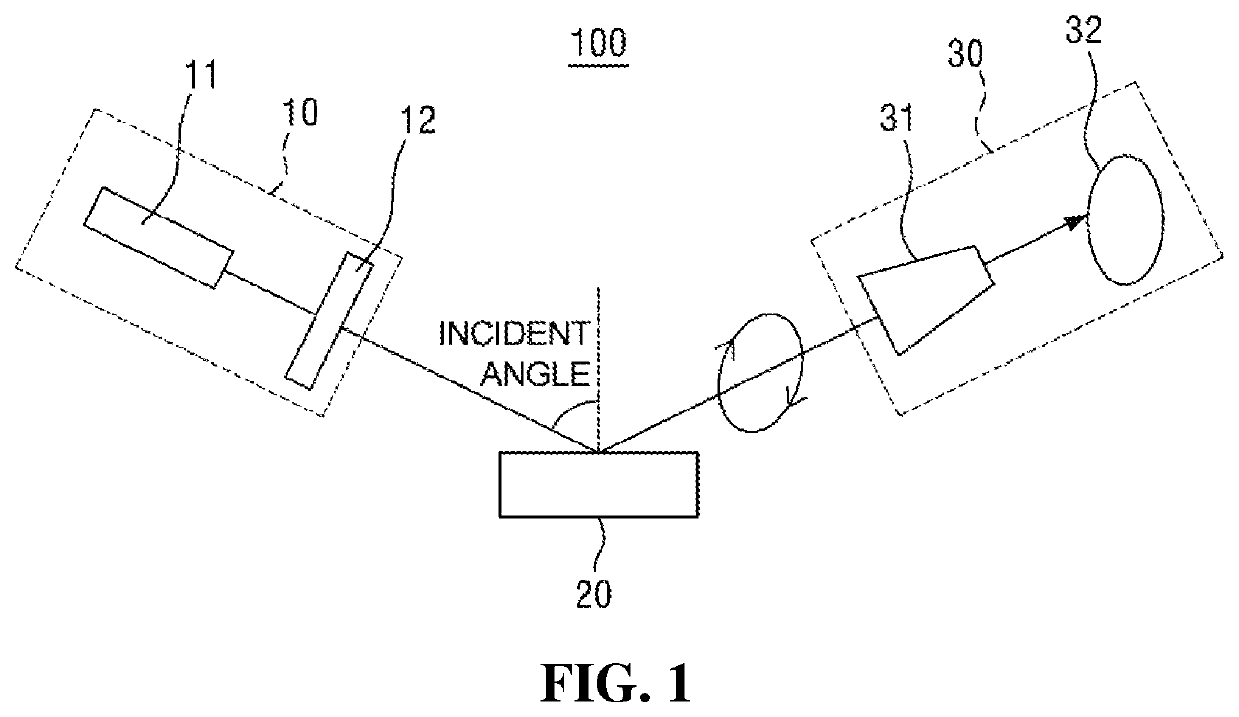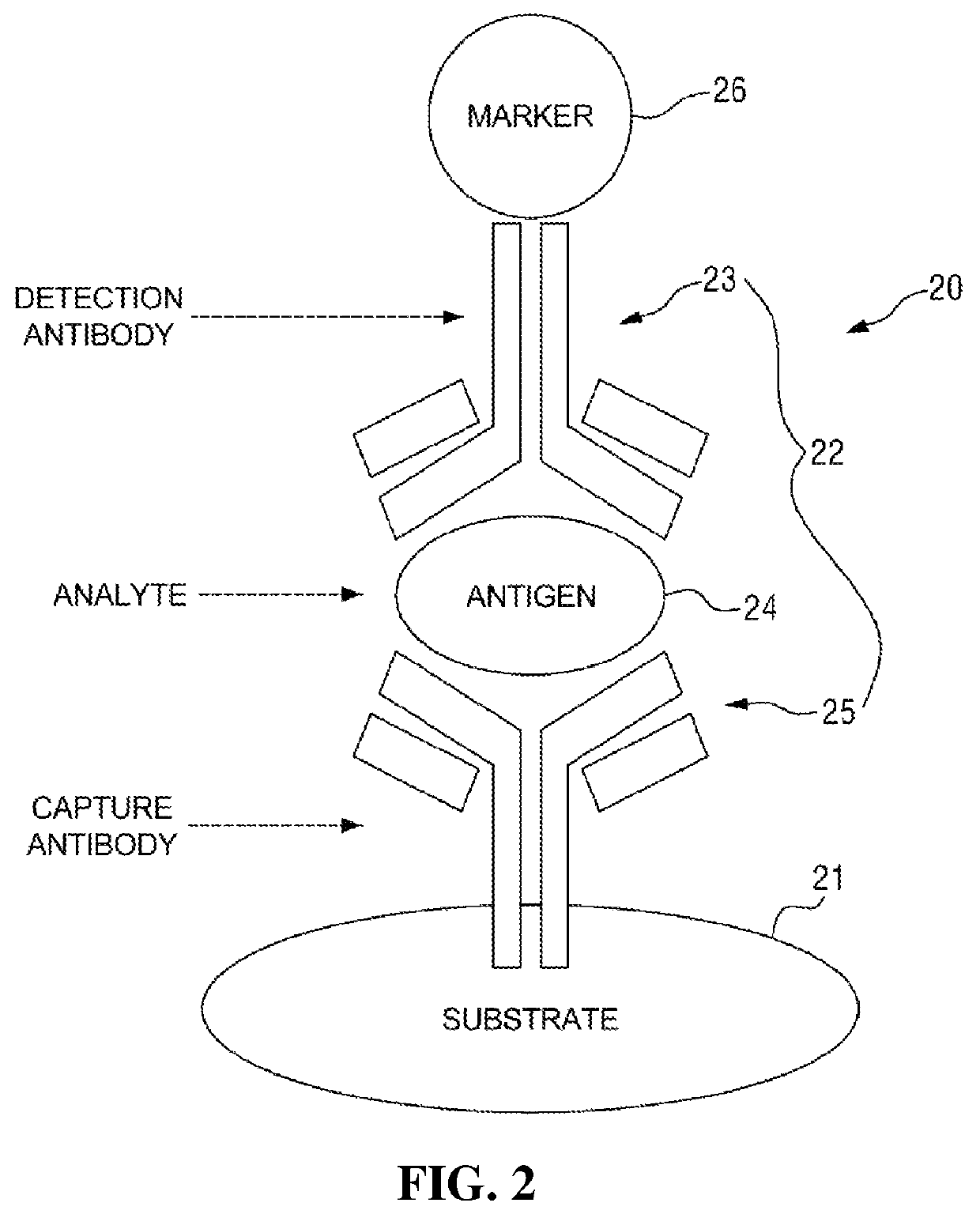High-sensitive biosensor chip using high extinction coefficient marker and dielectric substrate, measurement system, and measurement method
a biosensor and marker technology, applied in the direction of fluorescence/phosphorescence, instruments, material analysis, etc., can solve the problems of difficult measurement of biological substances having a low molecular weight or ultralow concentration, difficult to measure measurement sensitivity, and degrade the reliability of measured values, etc., to achieve sensitiveness, maximize measurement sensitivity, and maximize reaction efficiency
- Summary
- Abstract
- Description
- Claims
- Application Information
AI Technical Summary
Benefits of technology
Problems solved by technology
Method used
Image
Examples
Embodiment Construction
[0048]The objects, other objects, characteristics, and advantages of the present invention described above are to be easily understood through the following preferred embodiments related to the accompanying drawings. However, the present invention is not limited to the embodiments described here and can be realized as other embodiments. Instead, the embodiments introduced here are provided to make the disclosed details thorough and complete and to allow ideas of the present invention to be sufficiently understood by those skilled in the art.
[0049]In this specification, a case where a certain configurational element is described to be present on another configurational element means a case where the configurational element can be directly formed on the other configurational element or a third configurational element can be interposed between the configurational elements. In addition, in the drawings, configurational elements are illustrated to have an enlarged thickness for effective...
PUM
| Property | Measurement | Unit |
|---|---|---|
| thickness | aaaaa | aaaaa |
| distance | aaaaa | aaaaa |
| refractive index | aaaaa | aaaaa |
Abstract
Description
Claims
Application Information
 Login to View More
Login to View More - R&D
- Intellectual Property
- Life Sciences
- Materials
- Tech Scout
- Unparalleled Data Quality
- Higher Quality Content
- 60% Fewer Hallucinations
Browse by: Latest US Patents, China's latest patents, Technical Efficacy Thesaurus, Application Domain, Technology Topic, Popular Technical Reports.
© 2025 PatSnap. All rights reserved.Legal|Privacy policy|Modern Slavery Act Transparency Statement|Sitemap|About US| Contact US: help@patsnap.com



